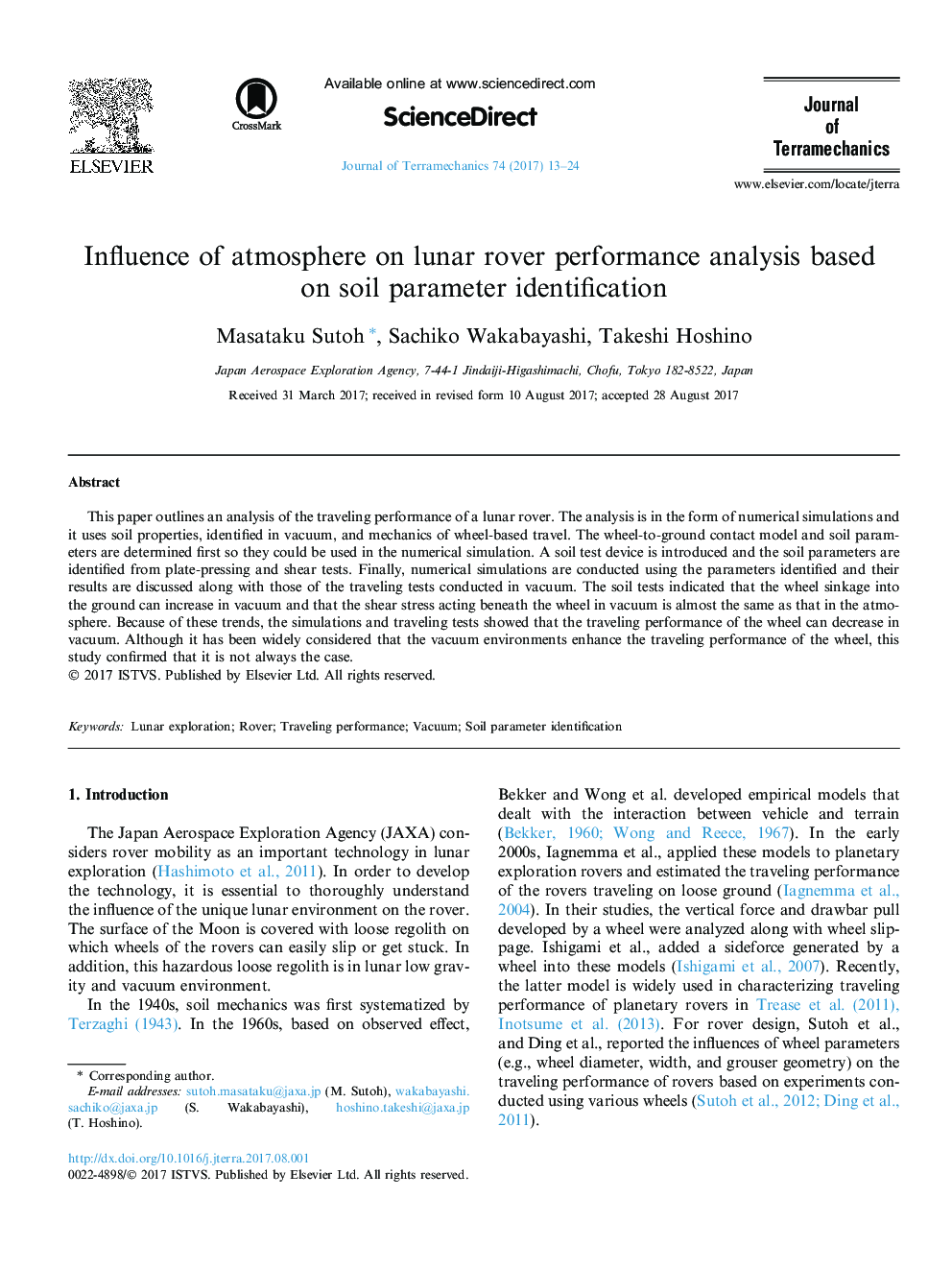| Article ID | Journal | Published Year | Pages | File Type |
|---|---|---|---|---|
| 5018345 | Journal of Terramechanics | 2017 | 12 Pages |
Abstract
This paper outlines an analysis of the traveling performance of a lunar rover. The analysis is in the form of numerical simulations and it uses soil properties, identified in vacuum, and mechanics of wheel-based travel. The wheel-to-ground contact model and soil parameters are determined first so they could be used in the numerical simulation. A soil test device is introduced and the soil parameters are identified from plate-pressing and shear tests. Finally, numerical simulations are conducted using the parameters identified and their results are discussed along with those of the traveling tests conducted in vacuum. The soil tests indicated that the wheel sinkage into the ground can increase in vacuum and that the shear stress acting beneath the wheel in vacuum is almost the same as that in the atmosphere. Because of these trends, the simulations and traveling tests showed that the traveling performance of the wheel can decrease in vacuum. Although it has been widely considered that the vacuum environments enhance the traveling performance of the wheel, this study confirmed that it is not always the case.
Keywords
Related Topics
Physical Sciences and Engineering
Earth and Planetary Sciences
Geotechnical Engineering and Engineering Geology
Authors
Masataku Sutoh, Sachiko Wakabayashi, Takeshi Hoshino,
